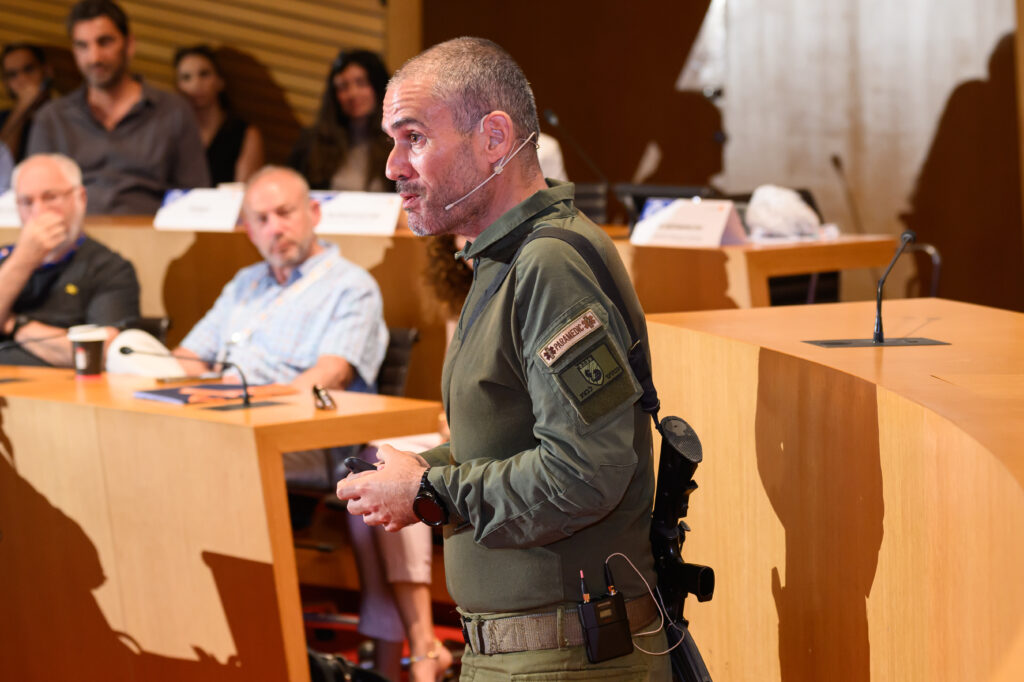
Diabetes Research May Be at Cusp of Cure
Diabetes Research May Be at Cusp of Cure
November 3, 2008
Medical Research, Press Releases
BEER-SHEVA,
Similarly significant results using the same component, human AAT, but in an alternative animal diabetes model, further indicate that inflammation reduction is key to pancreatic islet beta cell survival (Koulmanda et al.). The two separate papers were published in the Proceedings of the National Academy of Sciences (PNAS).
According to Dr. Eli Lewis, director of the Clinical Islet Laboratory at BGU, “We have found that by targeting multiple inflammatory molecules using a safe, non-toxic and non-steroidal drug, we can block inflammation so effectively that we literally modify the immune response, facilitating transplant acceptance to successfully treat diabetics and those at risk.”
Treating diabetics with transplanted human pancreatic islet cells can restore normal glucose levels and relieve the patient from insulin injections. However, with the use of present-day immunosuppressive drugs, these transplants do not last long because of underlying inflammation that destroys the insulin producing cells, and within five years of grafting, most patients return to insulin injections.
In his study, Dr. Lewis reports that treating diabetic mice with serum protease inhibitor alpha-1-antitrypsin (AAT) – a naturally occurring human anti-inflammatory agent – for a short 14-day monotherapy course following an islet transplant created a protective state around the transplant and kept the islet cells alive and functioning for over 120 days after treatment was stopped.
“In fact, after grafts were removed, a second grafting session was undertaken and to our surprise, animals accepted the same strain of islets without further therapy – while foreign islets were appropriately rejected. Their immune system was, so to speak, re-formatted by human AAT to allow the graft to be recognized and accepted,” said Lewis.
Dr. Lewis continues, “Apparently, by eliminating the inflammatory component during transplantation, a protective branch of immune system had been encouraged to evolve. Indeed, when the grafted islet cells were recovered and examined, we discovered increased production of anti-inflammatory molecules inside the grafts as well as a population of protective regulatory T lymphocytes.
These specialized lymphocytes appear to have migrated toward the islet grafts and located at the border between the graft and the recipient, where they engage in disarming of graft-targeted immune attacks.”
Islet Transplantation
Human pancreatic islet transplantation is a vital option for type-1 diabetes patients. In this procedure, globally performed in over 50 centers, islets are collected from donors soon after death in a sterile laboratory. At the same time, a diabetic transplant candidate is reached and a transplantation team is recruited.
In this relatively simple surgical procedure, islets are introduced into the liver under local anesthesia, and covered by minimal immunosuppression, complete insulin independence is achieved.
Unfortunately, islet mass is rapidly reduced after engraftment by robust local inflammation. Even more unfortunate for the grafted cells, there is no anti-inflammatory coverage due to the removal of steroids from immunosuppression protocol. For this reason, the typical islet recipient will receive at least two grafts in order to restore glucose levels.
But perhaps the most discouraging information is that five-year islet cell function follow-up studies reveal unacceptably high islet erosion caused in part by unrestrained ongoing inflammation. There is, therefore, great demand for an anti-inflammatory islet survival regimen that is safe, feasible and effective.
“The study comes at a critical time since the therapy that the transplant teams have been using seems to have turned its back on the patients, with more than 80 percent of recipients returning to insulin injections after five years,” Dr. Lewis explains.
“While many are discouraged by the method, our paper recommends a safe, well known and widely used drug to provide exactly the coverage that is currently missing to make the transplants succeed. In fact, we’re almost replacing the need for steroids in this specific setup by blocking inflammation where steroids would have.”
Human AAT has been used for more than 20 years in the form of weekly intravenous injections to treat a rare but serious genetic abnormality known as alpha-1-antitrypsin deficiency, the most common cause of hereditary lung emphysema. In these long-lasting treatments, AAT exhibited an impressive safety record.
The U.S. Food & Drug Administration (FDA) has already approved a human clinical trial to begin to test the impact of AAT in type-1 diabetes patients undergoing islet transplantation at the
Parallel Study Conducted
The study performed by Dr. Lewis’ group gains great scientific support from a parallel study performed at the
“We think that it will also be necessary to restore proper insulin signaling, and the way to do that is by eliminating the curious inflammatory state that exists in muscle, fat and other insulin-sensitive tissues,” says the author of the companion PNAS paper Maria Koulmanda, Ph.D, director of Non-Human Primate Research at BIDMC.
“We were able to demonstrate that treatment with AAT – an agent that dampens inflammation but does not directly inhibit T-cell activation – ablates invasive insulitis and restores euglycemia (normal blood glucose concentration), immune tolerance to beta cells, normal insulin signaling and insulin responsiveness in NOD (non-obese diabetic) mice with recent onset type 1 diabetes,” she says.
Their experiments show that the functional mass of beta cells actually expanded in the NOD mice treated with AAT.
Dr. Lewis is the recipient of the prestigious Young Scientist Career Development Award from The Juvenile Diabetes Research Foundation (JDRF), under which the search for further mechanisms of action of alpha-1-antitrypsin is incorporated.
ABOUT AMERICANS FOR BEN-GURION UNIVERSITY
By supporting a world-class academic institution that not only nurtures the Negev, but also shares its expertise locally and globally, Americans for Ben-Gurion University engages a community of Americans who are committed to improving the world. David Ben-Gurion envisioned that Israel’s future would be forged in the Negev. The cutting-edge research carried out at Ben-Gurion University drives that vision by sustaining a desert Silicon Valley, with the “Stanford of the Negev” at its center. The Americans for Ben-Gurion University movement supports a 21st century unifying vision for Israel by rallying around BGU’s remarkable work and role as an apolitical beacon of light in the Negev desert.
About Ben-Gurion University of the Negev
Ben-Gurion University of the Negev embraces the endless potential we have as individuals and as a commonality to adapt and to thrive in changing environments. Inspired by our location in the desert, we aim to discover, to create, and to develop solutions to dynamic challenges, to pose questions that have yet to be asked, and to push beyond the boundaries of the commonly accepted and possible.
We are proud to be a central force for inclusion, diversity and innovation in Israel, and we strive to extend the Negev’s potential and our entrepreneurial spirit throughout the world. For example, the multi-disciplinary School for Sustainability and Climate Change at BGU leverages over 50 years of expertise on living and thriving in the desert into scalable solutions for people everywhere.
BGU at a glance:
20,000 students | 800 senior faculty | 3 campuses | 6 faculties: humanities & social sciences, health sciences, engineering sciences, natural sciences, business & management, and desert research.
For all press inquiries, please contact:
James Fattal, J Cubed Communications
516.289.1496



